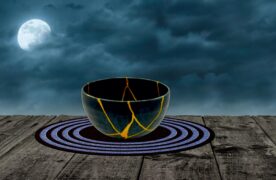This other health problem rose with the spring, lasting until September and which it is important to treat to avoid contracting Coronavirus.
 Silvia Martínez
Silvia Martínez
In this period, temperatures have risen, the sun is more present and it is also time for many plants to bloom which increases the concentration of pollen in the air.
Trees, bushes and grasses release these miniscule particles into the air to be fertilised and they travel long distances in the process.
The pollen-release mechanism (anthesis) varies depending on the species and some climate-related parameters: warm and windy days make pollination easier, while relative high humidity in the air makes it more difficult.
This is the reason why allergic processes are more common, also seasonal flus, whose symptoms are usually confused (in their initial stages) with the SARS-CoV-2 virus, even creating a degree of alarm in people thinking they are infected.
 A call from the Italian National Institute of Health (ISS), warns that it is common in these months for some typical symptoms of respiratory allergies to appear or worsen, such as rhinitis, conjunctivitis and oculorhinitis, the symptoms of which can be associated with the new Coronavirus.
A call from the Italian National Institute of Health (ISS), warns that it is common in these months for some typical symptoms of respiratory allergies to appear or worsen, such as rhinitis, conjunctivitis and oculorhinitis, the symptoms of which can be associated with the new Coronavirus.
According to the ISS, this disease affects one in every four people in the world, and it defines allergies as a whole as a “hypersensitive response from the immune system to foreign agents, allergens represented by very different substances” and, among them, is cited pollen. The best way of fighting this evil is avoiding contact with the substance that causes it, which, being pollen, is much more complicated as it means not being outdoors during the migration period, closing windows and using air filters and air conditioning systems.
Pollen allergies present with several clinical symptoms (ocular, nasal and bronchial) and occur with greater frequency in spring and autumn. This means only in specific periods of the year, associated with plant pollination.
If symptoms appear from April to June, Gramineae (grasses) and olive trees are usually the main culprits.
 According to the time when symptoms appear, the most frequent pollen allergies in Italy are in the spring-summer period, from sensitisation to plants with blossom between April and September, the ISS indicates.
According to the time when symptoms appear, the most frequent pollen allergies in Italy are in the spring-summer period, from sensitisation to plants with blossom between April and September, the ISS indicates.
Doctor Giuseppe Timoncini, an allergist at the San Pier Damiano Hospital in Faenza, in the northern region of Emilia-Romagna, said that if allergens enter the respiratory tract or the eyes of a person who is allergic to them, they cause an immune reaction that induces watery eyes, nasal secretions, sneezing and coughing.
Colds, coughs and breathing difficulties are all common symptoms of pollen allergies and Covid-19, as is also conjunctivitis.
These physical discomforts can create concern in people although, the specialist clarified, “in general, people with allergies know the typical symptoms, but not those who are experiencing them for the first time, which is why they need information to tell them apart”.
 Fever is the first symptom to consider, belonging to Covid-19 but not to pollen allergies. Therefore, it is the first reason to consult the doctor, even more so if the person has had some contact with an individual infected with this illness.
Fever is the first symptom to consider, belonging to Covid-19 but not to pollen allergies. Therefore, it is the first reason to consult the doctor, even more so if the person has had some contact with an individual infected with this illness.
Allergic rhinitis causes ‘bursts of sneezing and nasal secretion, which is rare in a new infection with Coronavirus’, the physician noted.
Treatment for allergies is important to avoid contracting the Covid-19 virus because “it reduces the typical symptoms that can lead to touching your nose and eyes with dirty hands”. (PL)
(Translated by Donna Davison – Email: donna_davison@hotmail.com) – Photos: Pixabay












.jpg)












